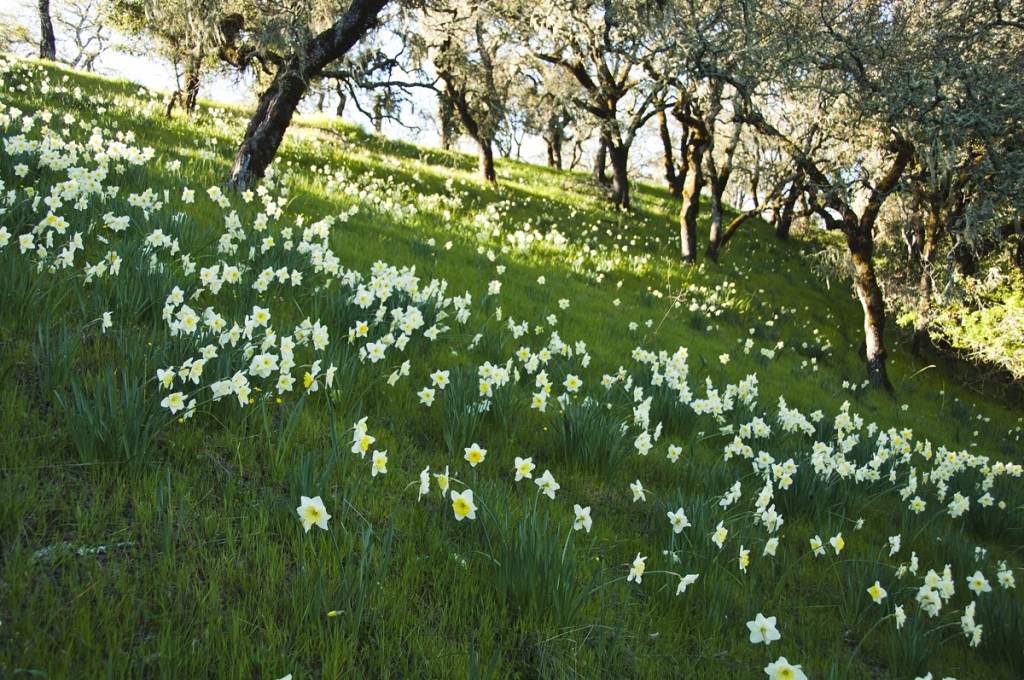One
Prepare the soil by digging down about 9”. The hole should be large enough to hold 5-7 daffodils or more depending on your design. The holes should not be planted in straight lines unless you want them to look like soldiers! I plant my hillsides in a staggered manner to make them look as natural as possible.
Two
One tablespoon of bone meal or bulb fertilizer can be added to the bottom of the hole. Cover the fertilizer with enough soil to allow the bulb to avoid contact with it.
I don’t bother to fertilize mine as the bulbs are so large and they have a proportionate amount of food.
Three
Plant the daffodil about 6” below ground level if the bulb is very large. Smaller bulbs are planted more shallowly. The rule of thumb is to plant it 3 times the base to shoulder height of the bulb (measured to the point where it narrows for the top). Regardless of how deeply they are planted, the daffodils will bloom, but greater depth helps the bulbs to re-bloom in future seasons.
Four
Water the bulbs in or leave them for the winter rains if the rains are not too long in coming.
Five
If this planting is on a hillside, you can mow the grass before the green stalks of the bulbs come up. Once they come up, the greenery cannot be mowed or it will affect the quality of the bloom.
Six
Once the bulbs bloom, some of the flowers can be cut, but cutting causes energy loss for replenishing the bulbs strength.
Seven
After the blooms are finished, all the stalks and leaves should be left to die back.
Eight
When all the growth has turned brown, it can be cut down to ground level or left to disintegrate as desired.
Nine
Do NOT braid or tie up the foliage unless you are willing to deplete the bulb and future blooming ability. It breaks the capillaries!
Ten
The area where the daffodils are planted should not be watered during the summer but allowed to dry out to keep the bulbs strong and viable.


0 Comments